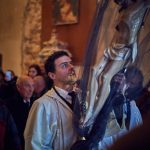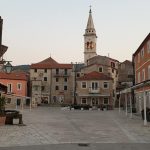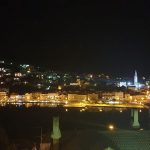Filipa Marušić continues her look at the intangible UNESCO heritage of Croatia on December 7, 2016, with a journey to the island of Hvar and the centuries old Za križen procession during Holy Week.
The Procession “Za križen” or Following the cross is annual event on Hvar island before Easter which was recognised by UNESCO in 2009, when it was listed on the intangible heritage list. This procession takes place each year on the night of Maundy Thursday and lasts until early morning on Good Friday for more than 500 years without interruption. The cross carrying procession goes through six different villages on Hvar island and starts at 22:00 from parish churches in Jelsa, Pitve, Vrisnik, Svirče, Vrbanj and Vrbovska. The cross-bearer, who is usually just in socks or barefoot, carries the cross around a 22km route through the other villages before returning to his parish church in the morning.
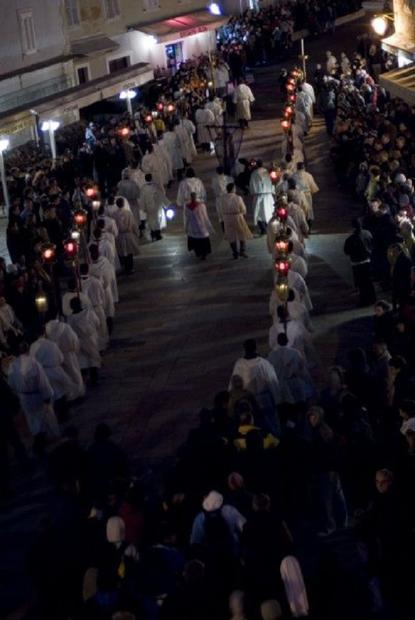
Some of the crosses are heavy – like the one from Jelsa, while cross-bearers from Pitve have the longest route. The cross-bearers say the weight of the cross is not always the problem but the sweaty palms or bad weather are bigger issues. The cross-bearer is followed by feralista (men who carry oil lamps in the Procession) and numerous pilgrims. They stop in front of different churches and chapels on the return to the parish church before dawn. The procession route is a circular clockwise route, and if two processions meet that would be a sign of bad luck. The people who walk the procession pass approximately 22 kilometres in 8 hours on the path lit with candles and lamps. The cross-bearer usually runs with the cross during his final steps in front of the parish church. The procession is prepared and conducted by the Brotherhood of Blessed Sacrament whose history has been marked by the cross, and its members are cross-bearers. The first written evidence of the procession dates back to 1658. and it is written by bishop Milani who explains different protocol that was in use back then.
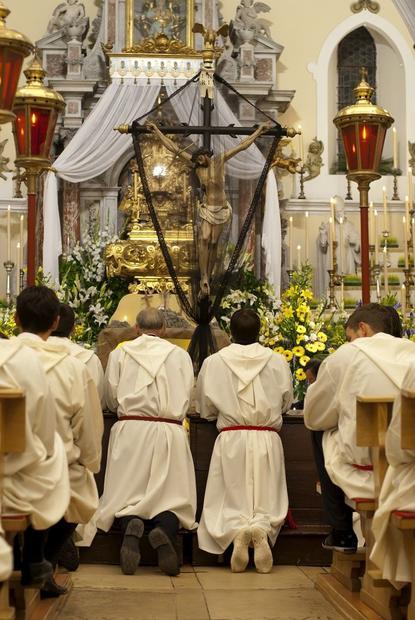
Previously, all you needed to do to be a cross-bearer was just to sign up for the next year and that would be it. But in 1970s and 1980s there was a lack of cross bearers. Because of that, father Božidar Medvid organised a large prayer gathering during the mid-1980s and after that event there were enough bearers for several years in advance. At the end of 1980s there was a group of kids who spontaneously signed up for the procession. After this event, more people from the brotherhood signed up to be a cross-bearer. This made a list for the cross-bearers for the next 25-30 years. To be a cross-bearer you do not have to be born on Hvar but you should have your family roots from here.
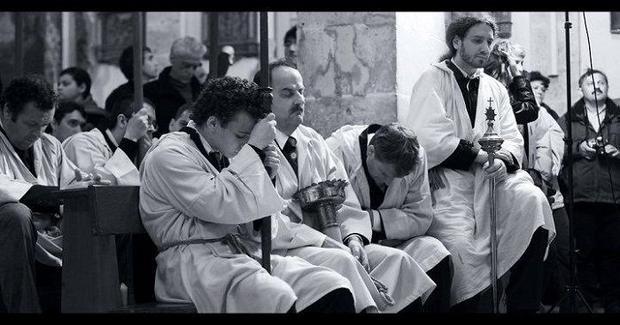
The cross-bearer is not only carrying the cross but is also involved in the organisational part of the procession and participates in the life of the community and the parish. The preparation for the procession is usually done during Lent – the cross-bearer selects his companions and singers with whom he rehearses before the procession. The men are usually involved in improving their parish churches while women prepare the food and polish candle sticks and lamp holders. Also, all the roads and paths are prepared and cleaned for the procession.
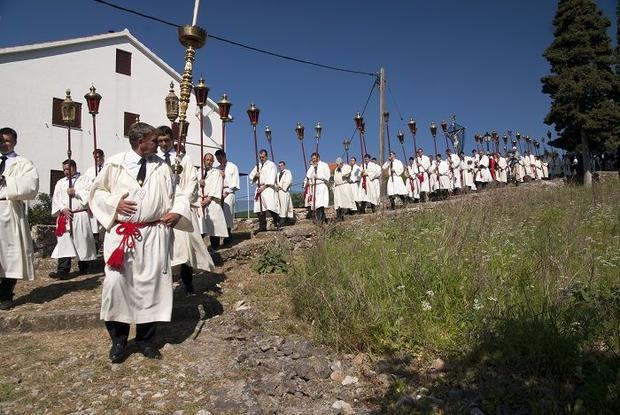
The event itself is quite silent and you cannot hear church bells until Easter Sunday. The procession starts with a short homily and then continues with the singing. The cross-bearer is the main figure during the procession and he is followed by singers, candle bearers and batištrada (leader of procession) and local people and pilgrims. The central part of the procession are the lamentations of the Virgin Mary. This is an octosyllabic passion related text dating from the 15th century sang by kantaduri singers. The procession passion songs inspired Ljubo Stipšić who wrote oratorium Kalvarija and this piece is performed by Ensemble LADO. Mr Dražen Kurilovčan, musical director of Ensemble LADO thinks this musical masterpiece inspired the wider public to experience the beauty and value of “Za križen” procession.
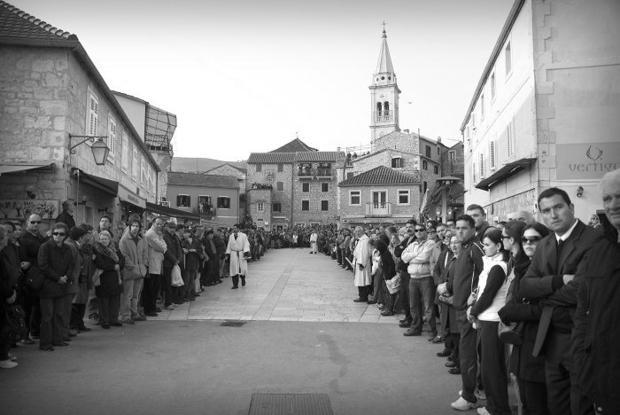
One of the best descriptions on how to be a cross-bearer was given by Mr Paulo Bunčuga in his interview with TCN. The interesting thing he said was the procession “Za križen” is not yet another event that could be presented and used for attracting tourists – he said locals want their peace especially during Easter despite the fact Easter is official start of pre-season. Furthermore, media spotlight is not the goal for the cross-bearers – it’s just additional distraction. This event is highly religious and spiritual and is of great importance to local communities on Hvar island. One of the things that can be done is just to spread the word about this event as the tradition worth preserving.
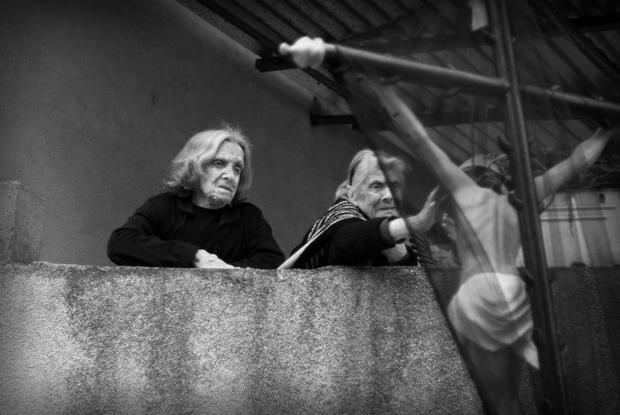
Watch the excellent documentary by Hvar TV following a cross bearer from Pitve in the video below.
https://total-croatia-news.com/wp-content/uploads/2016/12/Easter-procession-hvar-7.jpg.value = F[name+'_year'].value + '-' + F[name+'_month'].value + '-' + F[name+'_day'].value; }


